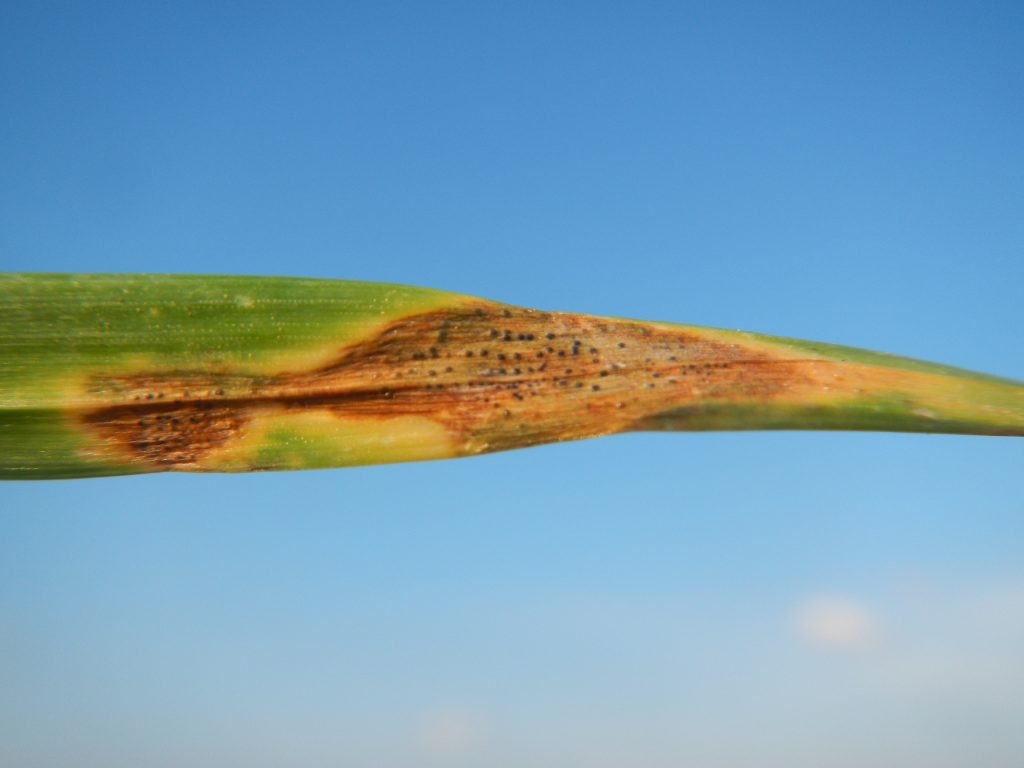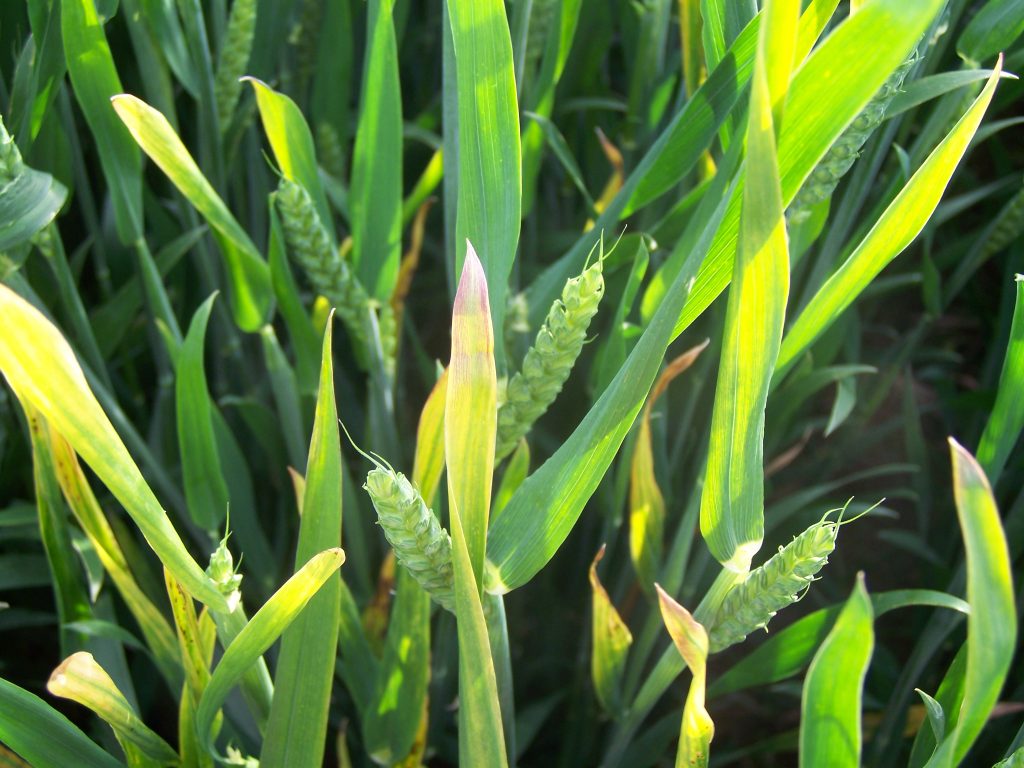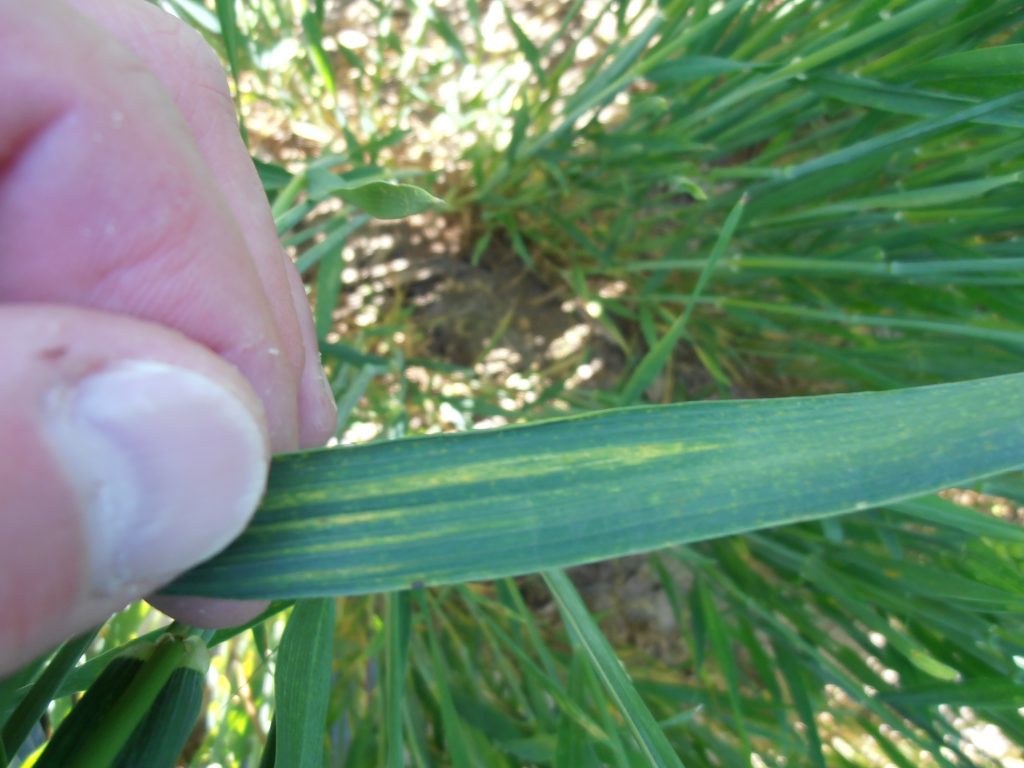Wheat – foliar disease update and outlook
Symptoms of some foliar diseases of wheat are apparent in Illinois wheat fields, and the threat of other diseases is on the horizon. Current wheat diseases that have been observed in the state are Septoria and Stagonospora leaf blotch, Barley yellow dwarf, and other virus diseases.



Of these diseases, only the fungal leaf blotches (Septoria/Stagonospora) can be managed with foliar fungicides. Although a flag leaf emergence timing for a foliar fungicide application may be recommended sometimes, University of Illinois research results have shown that a single application at early flowering (Feekes 10.5.1), timed to manage Fusarium head blight (scab), may provide adequate protection of the flag leaf for management of foliar fungal diseases. If the decision is made to apply a fungicide at Feekes 10.5.1, only a few fungicides are recommended (and labeled) for this timing (Prosaro, Caramba, and tebuconazole products). For more information about available fungicide products and efficacy, please see the NCERA 184 Small Grains Disease Multi-State Committee’s Fungicide Efficacy Chart (NCERA 184 Wheat fungicide table 2013).
Stripe rust has not yet been detected or reported in Illinois, but is headed this way. Recently, plant pathologists from Kentucky, Tennessee, and Arkansas have reported stripe rust in their states. Stripe rust will continue to move northward, so Illinois wheat growers should be prepared to manage this disease with a fungicide, if necessary. Scouting for stripe rust will help with fungicide application decisions. Symptoms of stripe rust first appear as narrow, chlorotic streaks on the leaves. As the disease progresses, orange-yellow pustules will form on these streaks, giving a “striped” appearance. Some varieties may have a higher level of resistance to stripe rust than others, so it also is important to know how susceptible a particular variety is when making the decision to spray a fungicide for stripe rust management.







